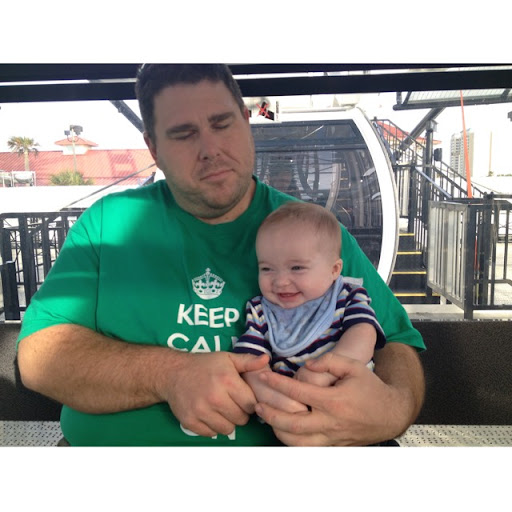Mark L Rea
age ~69
from Tigard, OR
- Also known as:
-
- Mark Larry Rea
- Phone and address:
-
12291 Adina Ct, Portland, OR 97224
(971)3441671
Mark Rea Phones & Addresses
- 12291 Adina Ct, Portland, OR 97224 • (971)3441671
- Tigard, OR
- 3655 Skyline Dr, Hayward, CA 94542 • (510)5839312
- San Jose, CA
- Sunnyvale, CA
Medicine Doctors

Mark E. Rea
view sourceSpecialties:
Cardiovascular Disease
Work:
Heart Center Of Northeast Ohio
250 Debartolo Pl STE 2750, Youngstown, OH 44512
(330)7587703 (phone), (330)7584930 (fax)
250 Debartolo Pl STE 2750, Youngstown, OH 44512
(330)7587703 (phone), (330)7584930 (fax)
Education:
Medical School
Northeastern Ohio Universities College of Medicine
Graduated: 2002
Northeastern Ohio Universities College of Medicine
Graduated: 2002
Procedures:
Angioplasty
Cardiac Stress Test
Cardioversion
Cardiac Catheterization
Continuous EKG
Echocardiogram
Electrocardiogram (EKG or ECG)
Pacemaker and Defibrillator Procedures
Cardiac Stress Test
Cardioversion
Cardiac Catheterization
Continuous EKG
Echocardiogram
Electrocardiogram (EKG or ECG)
Pacemaker and Defibrillator Procedures
Conditions:
Acute Myocardial Infarction (AMI)
Aortic Valvular Disease
Atrial Fibrillation and Atrial Flutter
Cardiomyopathy
Heart Failure
Aortic Valvular Disease
Atrial Fibrillation and Atrial Flutter
Cardiomyopathy
Heart Failure
Languages:
English
Description:
Dr. Rea graduated from the Northeastern Ohio Universities College of Medicine in 2002. He works in Youngstown, OH and specializes in Cardiovascular Disease. Dr. Rea is affiliated with Salem Regional Medical Center, St Elizabeth Health Center and Valleycare Northside Medical Center.
Isbn (Books And Publications)



Us Patents
-
Sensor For Detecting Droplet Characteristics
view source -
US Patent:6764168, Jul 20, 2004
-
Filed:Mar 1, 2002
-
Appl. No.:10/087539
-
Inventors:Henner W. Meinhold - Fremont CA
Mark L. Rea - Hayward CA
Sachin M. Chinchwadkar - Milpitas CA
Fred J. Chetcuti - Milbrae CA
John S. Drewery - Alameda CA -
Assignee:Novellus Systems, Inc. - San Jose CA
-
International Classification:B41J 2125
-
US Classification:347 81
-
Abstract:In one embodiment, a sensor includes two plates that form a capacitor. A droplet passing between the plates changes the capacitance of the sensor, thereby triggering an amplifier coupled to the sensor to generate an output signal. The output signal is indicative of droplet characteristics and may be used to calibrate a mechanism that dispensed the droplet.
-
Deposition Of Integrated Circuit Fabrication Materials Using A Print Head
view source -
US Patent:7091134, Aug 15, 2006
-
Filed:Jun 17, 2003
-
Appl. No.:10/464279
-
Inventors:Henner W. Meinhold - Fremont CA, US
Wayne Cai - Milpitas CA, US
Mark L. Rea - Hayward CA, US
Sachin M. Chinchwadkar - Milpitas CA, US -
Assignee:Novellus Systems, Inc. - San Jose CA
-
International Classification:H01L 21/31
-
US Classification:438758, 438 5, 438 14
-
Abstract:In one embodiment, an integrated circuit (IC) fabrication material is dispensed from a print head by dividing its nozzles into several groups, and sequentially allowing each group to fire. The nozzles may be grouped based on the amounts of material they dispense. For example, the nozzles may be grouped by drop volume or drop mass. In one embodiment, an IC fabrication material is dispensed on a substrate by controlling a firing sequence of a nozzle to promote merging of material on the substrate. The firing sequence may also be altered to take into account the firing sequence of adjacent nozzles.
-
Method For Planar Electroplating
view source -
US Patent:7449098, Nov 11, 2008
-
Filed:Dec 17, 2003
-
Appl. No.:10/739822
-
Inventors:Steven T. Mayer - Lake Oswego OR, US
Jonathan D. Reid - Sherwood OR, US
Mark L. Rea - Tigard OR, US
Ismail T. Emesh - Gilbert AZ, US
Henner W. Meinhold - Fremont CA, US
John S. Drewery - Alameda CA, US -
Assignee:Novellus Systems, Inc. - San Jose CA
-
International Classification:C25D 5/02
C25D 5/34
C25D 5/48
C25D 7/12 -
US Classification:205118, 205123, 205182, 205210, 205221, 205222
-
Abstract:A disclosed form of mechanically assisted electroplating leads to a flat, thin, overburden. In one example, an accelerator is deposited on a copper surface and mechanically removed in a simplified CMP-like apparatus. The wafer is then plated in an electrolyte containing little or no accelerating additives.
-
Topography Reduction And Control By Selective Accelerator Removal
view source -
US Patent:8158532, Apr 17, 2012
-
Filed:Nov 20, 2006
-
Appl. No.:11/602128
-
Inventors:Steven T. Mayer - Lake Oswego OR, US
Mark L. Rea - Tigard OR, US
Richard S. Hill - Atherton CA, US
Avishai Kepten - Lake Oswego OR, US
R. Marshall Stowell - Wilsonville OR, US
Eric G. Webb - Tigard OR, US -
Assignee:Novellus Systems, Inc. - San Jose CA
-
International Classification:H01L 21/302
-
US Classification:438754, 438692, 438745, 438759, 216105
-
Abstract:Plating accelerator is applied selectively to a substantially-unfilled wide (e. g. , low-aspect-ratio feature cavity. Then, plating of metal is conducted to fill the wide feature cavity and to form an embossed structure in which the height of a wide-feature metal protrusion over the metal-filled wide-feature cavity is higher than the height of metal over field regions. Most of the overburden metal is removed using non-contact techniques, such as chemical wet etching. Metal above the wide feature cavity protects the metal-filled wide-feature interconnect against dishing, and improved planarization techniques avoid erosion of the metal interconnect and dielectric insulating layer. In some embodiments, plating of metal onto a substrate is conducted to fill narrow (e. g. , high-aspect-ratio feature cavities) in the dielectric layer before selective application of plating accelerator and filling of the wide feature cavity.
-
Topography Reduction And Control By Selective Accelerator Removal
view source -
US Patent:8470191, Jun 25, 2013
-
Filed:Aug 6, 2007
-
Appl. No.:11/890790
-
Inventors:Steven T. Mayer - Lake Oswego OR, US
Mark L. Rea - Tigard OR, US
Richard S. Hill - Atherton CA, US
Avishai Kepten - Lake Oswego OR, US
R. Marshall Stowell - Wilsonville OR, US
Eric G. Webb - Tigard OR, US -
Assignee:Novellus Systems, Inc. - Fremont CA
-
International Classification:C23F 1/02
-
US Classification:216 92, 216105, 205670
-
Abstract:Plating accelerator is applied selectively to a substantially-unfilled wide (e. g. , low-aspect-ratio feature cavity. Then, plating of metal is conducted to fill the wide feature cavity and to form an embossed structure in which the height of a wide-feature metal protrusion over the metal-filled wide-feature cavity is higher than the height of metal over field regions. Most of the overburden metal is removed using non-contact techniques, such as chemical wet etching. Metal above the wide feature cavity protects the metal-filled wide-feature interconnect against dishing, and improved planarization techniques avoid erosion of the metal interconnect and dielectric insulating layer. In some embodiments, plating of metal onto a substrate is conducted to fill narrow (e. g. , high-aspect-ratio feature cavities) in the dielectric layer before selective application of plating accelerator and filling of the wide feature cavity.
-
Pretreatment Method For Photoresist Wafer Processing
view source -
US Patent:20170011906, Jan 12, 2017
-
Filed:Sep 13, 2016
-
Appl. No.:15/264262
-
Inventors:- Fremont CA, US
Mark L. Rea - Tigard OR, US -
International Classification:H01L 21/02
C25D 5/48
C25D 5/02
G03F 7/42
C25D 7/12
H01L 21/027
H01L 21/67
H01L 21/768
H01J 37/32
C25D 5/34 -
Abstract:Certain embodiments herein relate to methods and apparatus for processing a partially fabricated semiconductor substrate in a remote plasma environment. The methods may be performed in the context of wafer level packaging (WLP) processes. The methods may include exposing the substrate to a reducing plasma to remove photoresist scum and/or oxidation from an underlying seed layer. In some cases, photoresist scum is removed through a series of plasma treatments involving exposure to an oxygen-containing plasma followed by exposure to a reducing plasma. In some embodiments, an oxygen-containing plasma is further used to strip photoresist from a substrate surface after electroplating. This plasma strip may be followed by a plasma treatment involving exposure to a reducing plasma. The plasma treatments herein may involve exposure to a remote plasma within a plasma treatment module of a multi-tool electroplating apparatus.
-
Pretreatment Method For Photoresist Wafer Processing
view source -
US Patent:20150303065, Oct 22, 2015
-
Filed:Apr 21, 2014
-
Appl. No.:14/257744
-
Inventors:- Fremont CA, US
Mark L. Rea - Tigard OR, US -
Assignee:Lam Research Corporation - Fremont CA
-
International Classification:H01L 21/3065
C25D 5/48
C25D 7/12
H01L 21/027
H01L 21/02 -
Abstract:Certain embodiments herein relate to methods and apparatus for processing a partially fabricated semiconductor substrate in a remote plasma environment. The methods may be performed in the context of wafer level packaging (WLP) processes. The methods may include exposing the substrate to a reducing plasma to remove photoresist scum and/or oxidation from an underlying seed layer. In some cases, photoresist scum is removed through a series of plasma treatments involving exposure to an oxygen-containing plasma followed by exposure to a reducing plasma. In some embodiments, an oxygen-containing plasma is further used to strip photoresist from a substrate surface after electroplating. This plasma strip may be followed by a plasma treatment involving exposure to a reducing plasma. The plasma treatments herein may involve exposure to a remote plasma within a plasma treatment module of a multi-tool electroplating apparatus.
License Records
Mark Jeffrey Rea
License #:
110061 - Expired
Category:
Nursing
Issued Date:
Jul 13, 1992
Effective Date:
Jul 1, 2007
Expiration Date:
Dec 31, 2008
Type:
APRN
Mark Jeffrey Rea
License #:
110061 - Expired
Category:
Nursing
Issued Date:
Jul 13, 1992
Effective Date:
Jan 5, 2009
Expiration Date:
Dec 31, 2008
Type:
APRN-Nurse Practitioner
Mark J Rea
License #:
203 - Expired
Category:
Respiratory Care
Issued Date:
Feb 2, 1987
Effective Date:
Jun 1, 1990
Expiration Date:
Jun 1, 1990
Type:
Respiratory Care Practitioner
Resumes

Technician Master
view sourceLocation:
Portland, OR
Industry:
Semiconductors
Work:
Novellus Systems Feb 1999 - Jan 2008
Process Engineer
Fairchild Technologies Nov 1987 - Nov 1999
Process Engineer
Process Engineer
Fairchild Technologies Nov 1987 - Nov 1999
Process Engineer
Education:
Condie College 1989 - 1991
AS, Computer programming
AS, Computer programming
Skills:
Semiconductors
Failure Analysis
Metrology
Thin Films
Semiconductor Industry
Design of Experiments
R&D
Manufacturing
Process Engineering
Spc
Failure Analysis
Metrology
Thin Films
Semiconductor Industry
Design of Experiments
R&D
Manufacturing
Process Engineering
Spc

Superintendent
view sourceWork:
D&B Construction Group
Superintendent
Superintendent

Mark Rea
view source
Process Engineer At Novellus Systems
view sourceLocation:
Portland, Oregon Area
Industry:
Semiconductors
Googleplus

Mark Rea
Education:
Royal High School
Relationship:
Married
About:
Hey!
Tagline:
The Canadian guy

Mark Rea

Mark Rea

Mark Rea
Tagline:
A brief description of me? lol

Mark Rea

Mark Rea

Mark Rea
Myspace

Mark Rea
view source
Mark Rea
view source
Rea Mark
view source
Mark Oliver Rea
view source
Mark Christian Rea
view source
Mark Rea Hope
view source
Mark Rea
view source
Ranu Mark Rea
view sourceClassmates

Mark Rea
view sourceSchools:
Washington Irving Elementary School Rochester NY 1970-1976, Gates - Chili Middle School Rochester NY 1976-1978

Mark Rea
view sourceSchools:
East Lake High School Palm Harbor FL 1992-1996
Community:
Heather Mancuso

Mark Rea
view sourceSchools:
Belle Aire Elementary School Washington Court House OH 1964-1970
Community:
Bruce Daulton, Laurie Adams

Mark Rea
view sourceSchools:
Champlain High School Pembroke Morocco 1979-1983
Community:
Terry Fraser, Bill Laundry, Heather Dowdall, Sheila Monaghan

Mark Rea
view sourceSchools:
Garden Elementary School Stratford CT 1966-1972, Wooster Middle School Stratford CT 1972-1975
Community:
Brian Horkheimer, John Brockway, John Turechek, Luc Nicknair

Washington Irving Element...
view sourceGraduates:
Sheryl Bedford (1970-1971),
Mark Rea (1970-1976),
Brian Hart (1992-1993),
Dorothy Rea (1941-1948),
Jack Ritter (1949-1957)
Mark Rea (1970-1976),
Brian Hart (1992-1993),
Dorothy Rea (1941-1948),
Jack Ritter (1949-1957)

Garden Elementary School,...
view sourceGraduates:
Mark Rea (1966-1972),
Ina Ashen (1957-1964),
Deborah Gergots (1972-1974),
Kelly Wilcoxson (1978-1981)
Ina Ashen (1957-1964),
Deborah Gergots (1972-1974),
Kelly Wilcoxson (1978-1981)

Alice High School, Alice,...
view sourceGraduates:
Mark Rea (2000-2004),
Michelle Lozano (1984-1988),
Nelda Perez (1974-1978),
Sidney Smith (1979-1983),
Valerie Canales (1990-1994),
Garry Buegeler (1976-1980)
Michelle Lozano (1984-1988),
Nelda Perez (1974-1978),
Sidney Smith (1979-1983),
Valerie Canales (1990-1994),
Garry Buegeler (1976-1980)
Youtube
Flickr
Plaxo

Mark Rea
view source
Mark Rea
view sourceTigard, OregonPast: Process Engineer III at Novellus Systems Unemployed and looking for work in the semiconductor field or equivilent. Electromechanical, Chemical, Engineer or Technician
Get Report for Mark L Rea from Tigard, OR, age ~69

















